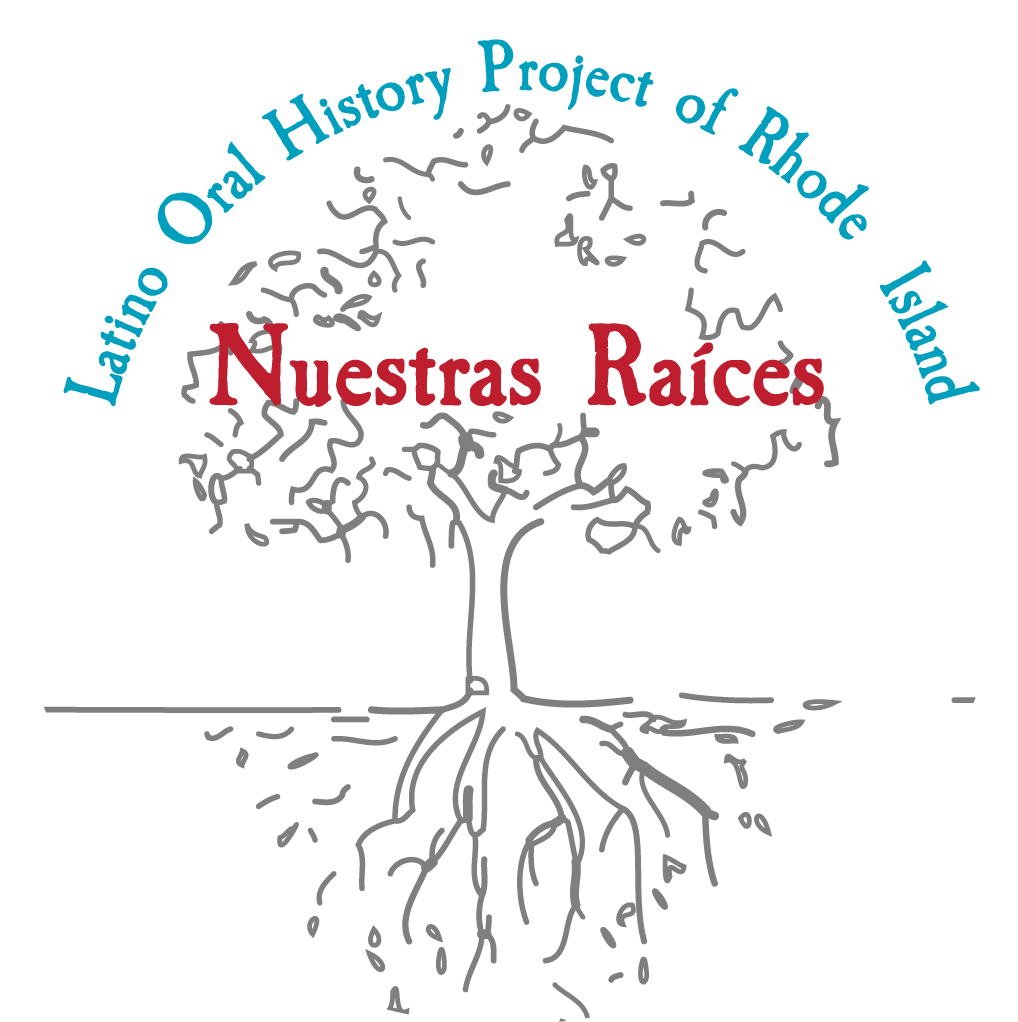In 1942, the U.S. and Mexican governments agreed to recruit more than 300,000 Mexicans Braceros to work low-paying agricultural and industrial jobs in the United States. Jobs became available as Americans went off to war or took on more highly skilled positions in armaments factories.
The alliance between Mexico and the U.S. during World War II brought the two countries into a far more harmonious relationship with one another. Mexican President Manuel Avila Camacho met with both Franklin D. Roosevelt and Harry S. Truman, helping to cement ties with the U.S.
In 1945, the end of World War II meant decreased U.S. demand for Mexican labor and for Mexican raw materials to fuel a major war. For Mexican laborers and Mexican exporters, there were fewer economic opportunities and the Braceros were returned to their homeland.
At the same time, the U.S. government's coffers were full which helped aid post-war industrialization to rebuild the country. To show support and to strengthen relations between the U.S. and Mexico, the U.S. encouraged and welcomed Mexican nationals into the United States, but this time it was those who were studying or who already had professional careers, such as doctors and engineers. Many came with visas to fill positions by way of internships and residencies, and they were also encouraged to join the armed forces. In Rhode Island, two such individuals were brothers Gimel and Zanoni Ortega, of Mérida.
The alliance between Mexico and the U.S. during World War II brought the two countries into a far more harmonious relationship with one another. Mexican President Manuel Avila Camacho met with both Franklin D. Roosevelt and Harry S. Truman, helping to cement ties with the U.S.
In 1945, the end of World War II meant decreased U.S. demand for Mexican labor and for Mexican raw materials to fuel a major war. For Mexican laborers and Mexican exporters, there were fewer economic opportunities and the Braceros were returned to their homeland.
At the same time, the U.S. government's coffers were full which helped aid post-war industrialization to rebuild the country. To show support and to strengthen relations between the U.S. and Mexico, the U.S. encouraged and welcomed Mexican nationals into the United States, but this time it was those who were studying or who already had professional careers, such as doctors and engineers. Many came with visas to fill positions by way of internships and residencies, and they were also encouraged to join the armed forces. In Rhode Island, two such individuals were brothers Gimel and Zanoni Ortega, of Mérida.
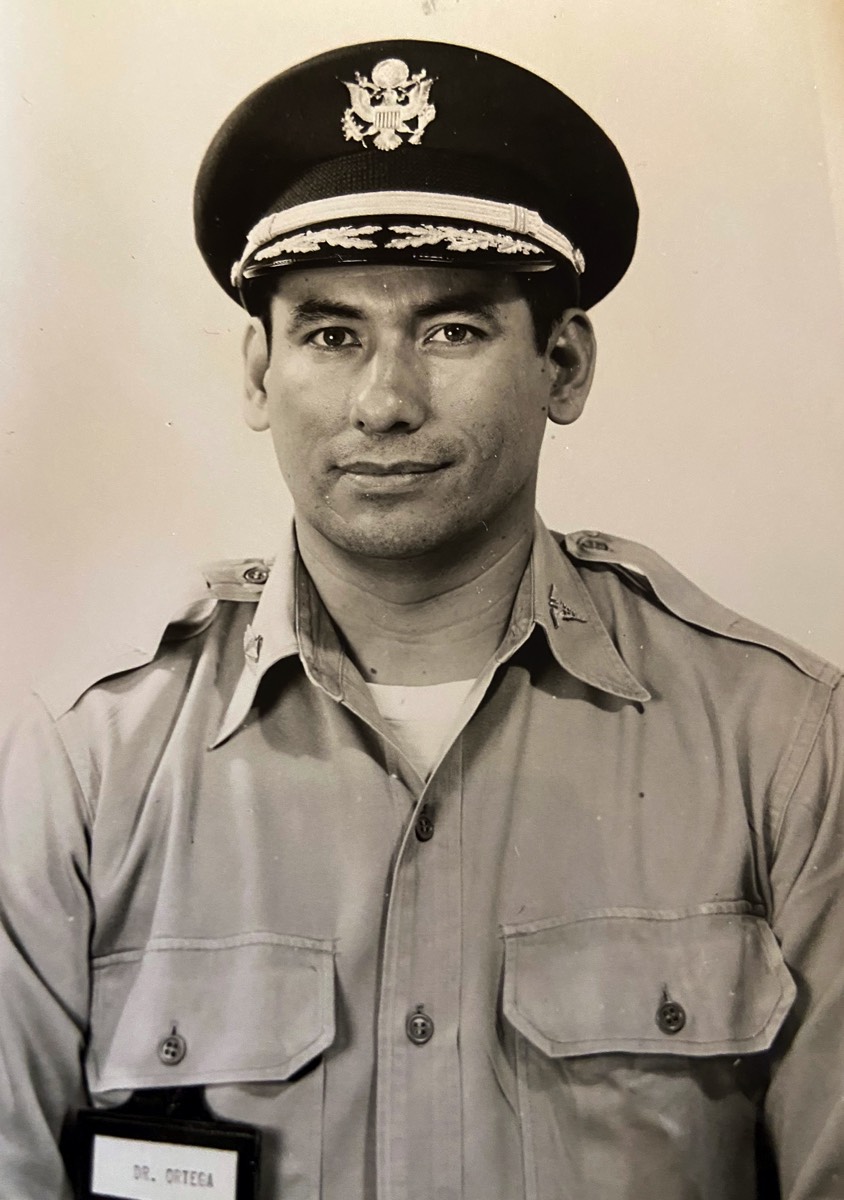
Zanoni Ortega, MD
Dr. Zanoni Ortega
Zanoni Ortega, was from Mérida, Yucatan, (México) and moved to Rhode Island in the late 1940s. His younger brother, Gimel who came first, in 1947, convinced his brother to move to Rhode Island.
Dr. Ortega, was a radiologist. He graduated from the University of Mérida, Mexico, where he also received his medical degree and then he came to Providence to do his residency at Roger Williams Hospital and St. Joseph Hospital before joining the Veterans Administration Medical Center. He eventually enlisted in the armed forces and became a Major in the U.S. Army.
Upon his brother's beckoning, on March 5, 1949, Zanoni took a bus from Mérida to Rhode Island. In October, his wife, Estela, traveled by bus and then by train, with their three children to join him. NOTE: Gimel moved to Worcester 2-3 years later, married and later settled in Florida, with his wife and family.
Dr. Ortega, was a radiologist. He graduated from the University of Mérida, Mexico, where he also received his medical degree and then he came to Providence to do his residency at Roger Williams Hospital and St. Joseph Hospital before joining the Veterans Administration Medical Center. He eventually enlisted in the armed forces and became a Major in the U.S. Army.
Upon his brother's beckoning, on March 5, 1949, Zanoni took a bus from Mérida to Rhode Island. In October, his wife, Estela, traveled by bus and then by train, with their three children to join him. NOTE: Gimel moved to Worcester 2-3 years later, married and later settled in Florida, with his wife and family.
EstelitaOrtega
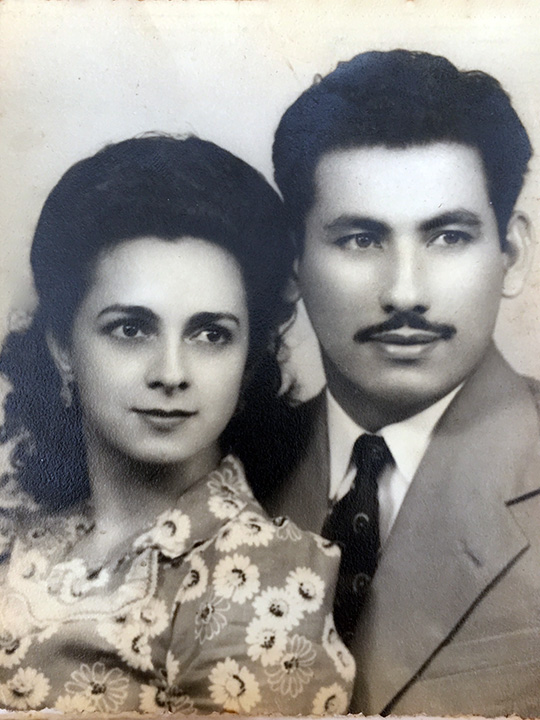
Nancy Ortega White, who spoke to us about her parents, remembers her mother saying how when she first came to Rhode Island, she felt extremely isolated. Estela couldn't speak English, she had no family to help her with the children, she was basically alone.
Nancy relates:
For many years, there were no markets where my parents could buy Mexican products. In the early 60s, my mother would host a dinner party for the Spanish teachers at Cranston East, where her three kids were taking Spanish, so that they could enjoy traditional Mexican dishes. In order to prepare for that dinner party, my parents would drive to New York City on a day trip to go to Latin markets so she could buy the cornmeal for the tortilla, because she made them by hand; she had her press and she made everything homemade.
Eventually, my parents became friendly with a gentleman (Albert Saglio), who owned a small Italian restaurant (the Spaghetti Place in Downtown Providence) and when he ordered his produce from New York City, he would order a case of avocados just so that Mom could make her guacamole. My mother later became very close to Albert’s wife, Cecilia, (an Argentinian woman who had been living in Rhode Island since the late 1930s) and the couple became Godparents to my brother, Ken, who was the first Ortega child born in Rhode Island.
Nancy adds that by the time her parents had been here for a while, the first Mexican that we met was a woman named Aída, a veterinarian assistant. They met other Spanish-speaking individuals through the International Institute of Rhode Island, where Cecilia Saglio was very active. Most were doctors and other professionals, and none were laborers or business owners. According to Nancy, the International Institute was a great influence on her mother, especially when she joined the Club Pan Americano. "It was definitely something that was really wonderful for both my parents because they finally were able to talk in Spanish to other people who were from Latin America."
Nancy relates:
For many years, there were no markets where my parents could buy Mexican products. In the early 60s, my mother would host a dinner party for the Spanish teachers at Cranston East, where her three kids were taking Spanish, so that they could enjoy traditional Mexican dishes. In order to prepare for that dinner party, my parents would drive to New York City on a day trip to go to Latin markets so she could buy the cornmeal for the tortilla, because she made them by hand; she had her press and she made everything homemade.
Eventually, my parents became friendly with a gentleman (Albert Saglio), who owned a small Italian restaurant (the Spaghetti Place in Downtown Providence) and when he ordered his produce from New York City, he would order a case of avocados just so that Mom could make her guacamole. My mother later became very close to Albert’s wife, Cecilia, (an Argentinian woman who had been living in Rhode Island since the late 1930s) and the couple became Godparents to my brother, Ken, who was the first Ortega child born in Rhode Island.
Nancy adds that by the time her parents had been here for a while, the first Mexican that we met was a woman named Aída, a veterinarian assistant. They met other Spanish-speaking individuals through the International Institute of Rhode Island, where Cecilia Saglio was very active. Most were doctors and other professionals, and none were laborers or business owners. According to Nancy, the International Institute was a great influence on her mother, especially when she joined the Club Pan Americano. "It was definitely something that was really wonderful for both my parents because they finally were able to talk in Spanish to other people who were from Latin America."
Nancy Ortega White interview by Marta V. Martínez
May 2020
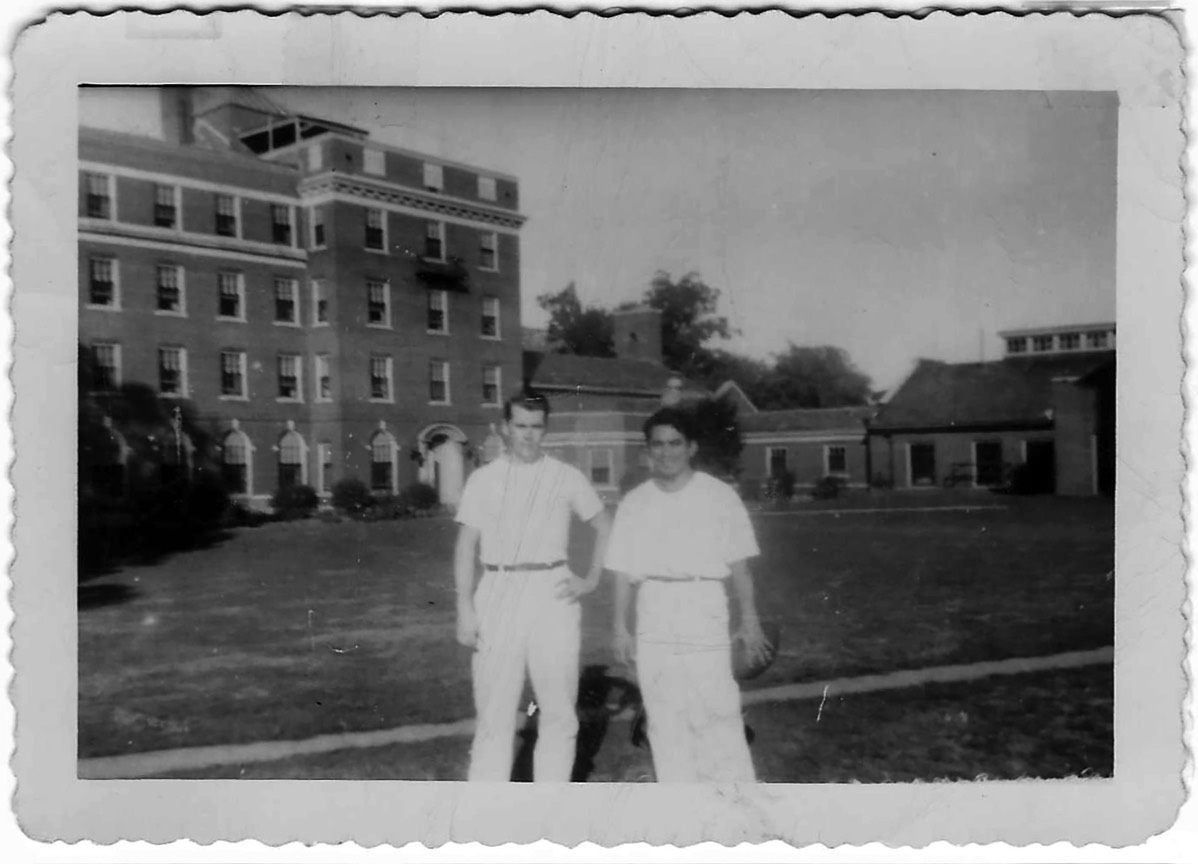
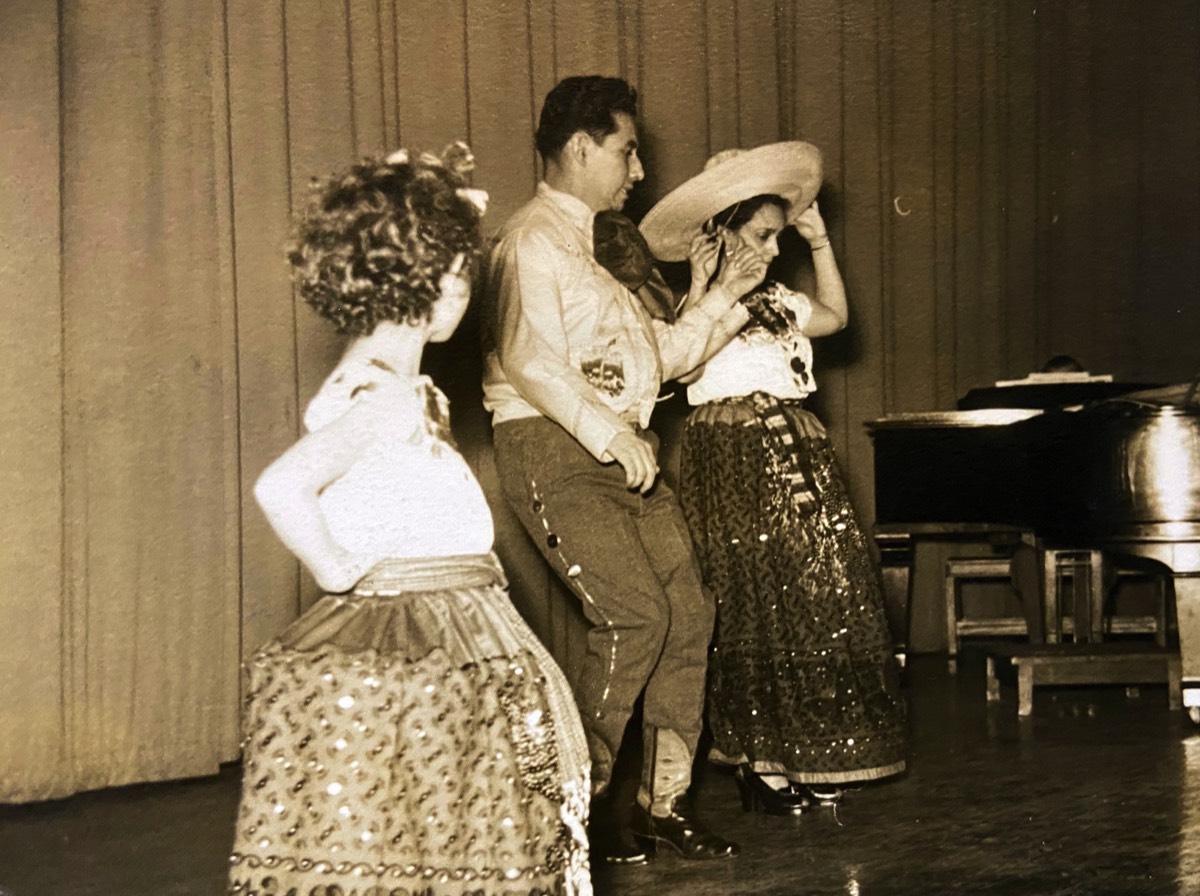
Above left: Gimel Ortega and Skip Harrington, both interns at Roger Williams Hospital. c1947 Right: Zanoni, Estela share their Mexican culture at their daughter's elementary school in Cranston. c1950

© All Rights Reserved | Nuestras Raíces: Latino History of RI © | When using materials from this website, please acknowledge by stating the name of the URL of the webpage on which it is displayed. Citations should include full bibliographic information as follows: Courtesy of the Latino Oral History Project of Rhode Island, Central Falls, RI.
